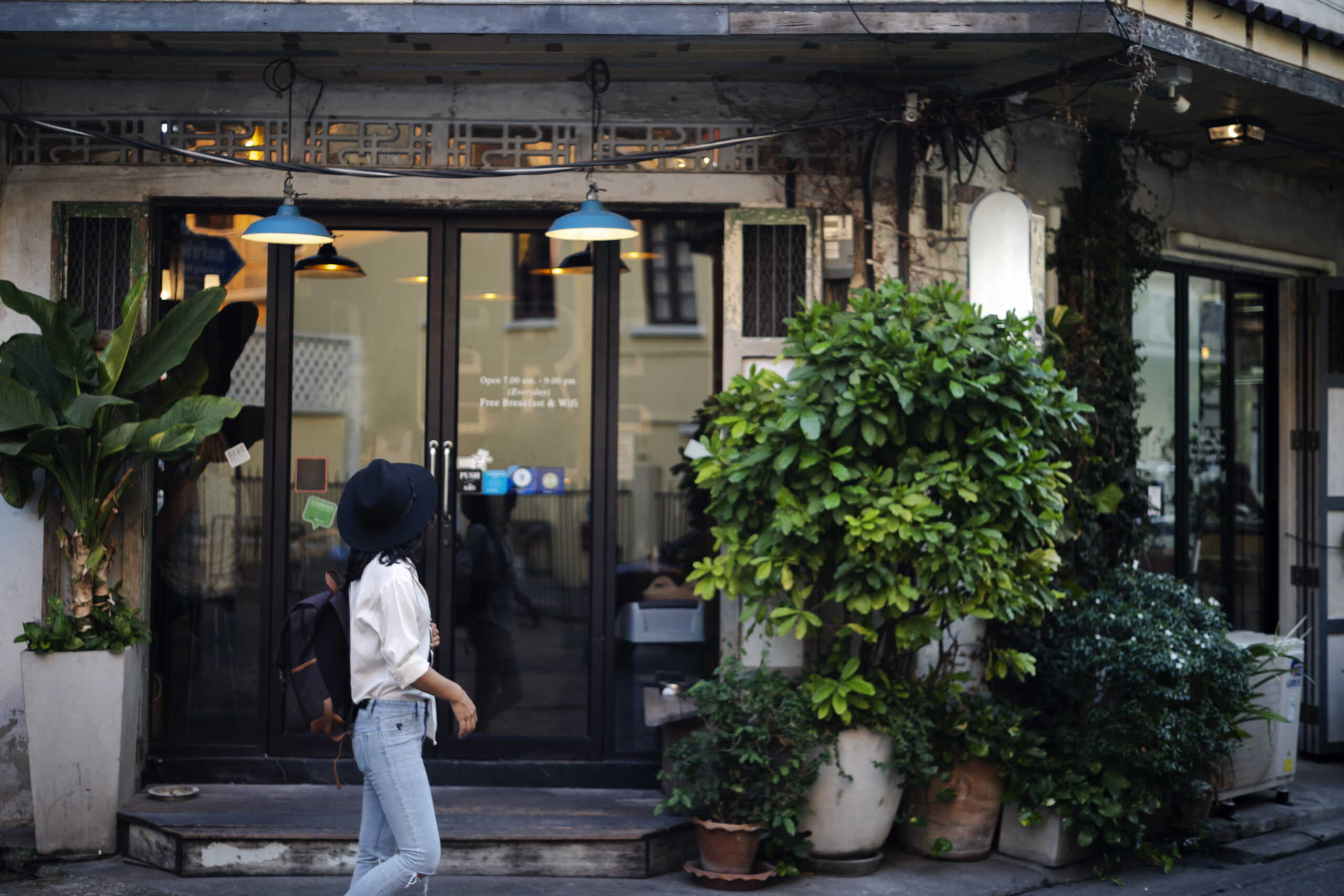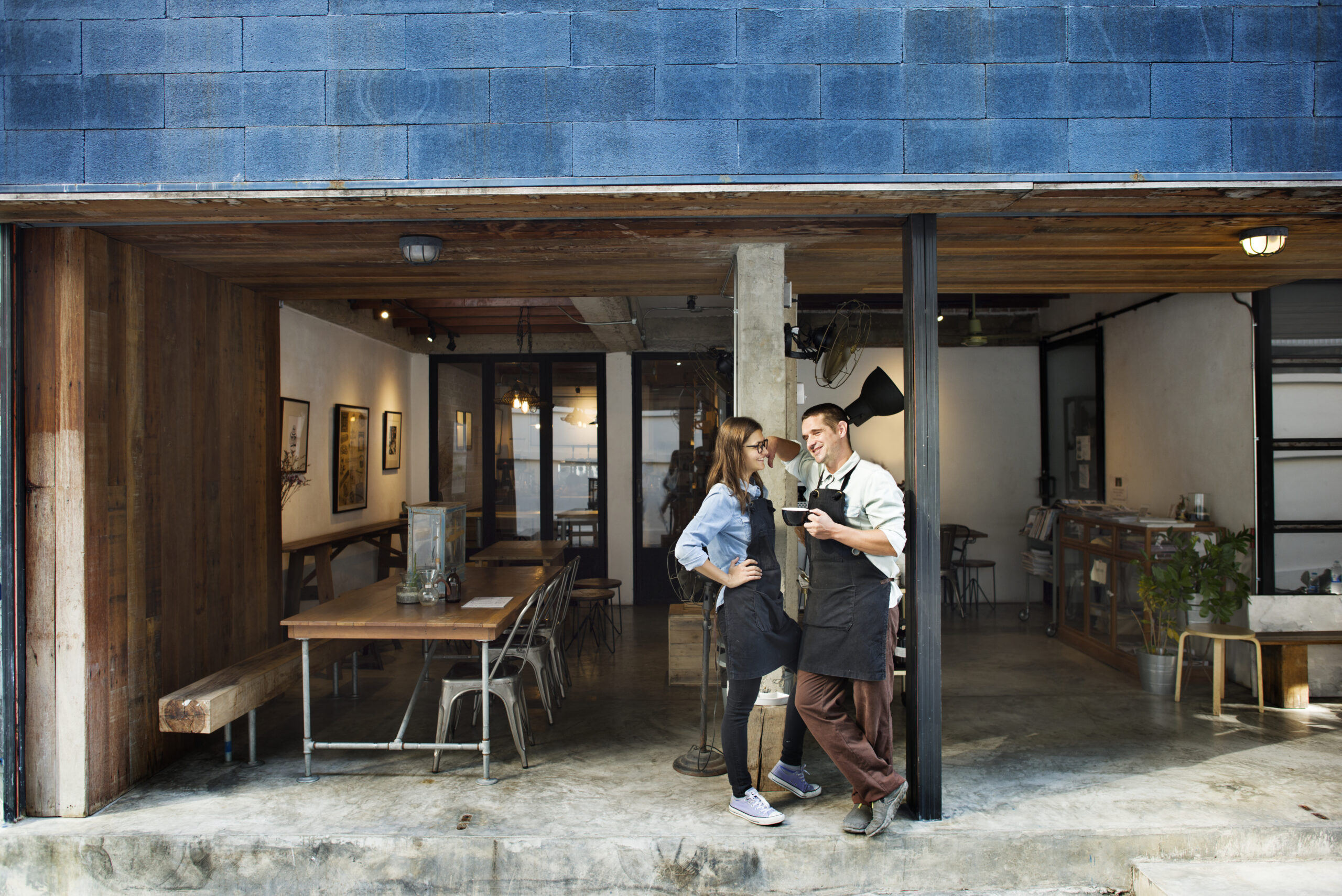Tiny restaurant design can be easily incorporated should business owners know what they are looking for. Here are some designs ideas to ponder upon.
Utilising vertical space is a game-changer for tiny restaurants which can easily let you maximise functionality and style without sacrificing your precious floor area. Thinking upwards instead of outwards will help you declutter space while adding more visual feel to it. You may install wall-mounted shelves that keep all the essential items like dishes, glassware or condiments which you would need later on, keep them handy and reserve the counters.
Besides, these can also serve as display shelves to hold plants, artwork or any small thematic items that would add character to your place. Pegboards or hanging racks for utensils, pans or even little pots will add dynamism and visual interest. And for an added touch of class, consider vertical wine racks or hanging glass holders to display beverages. Furthermore, floating cabinets house a place for menus, cleaning supplies or seasonal decorations. Employ vertical planters or living walls for bringing in greenery without eating space. These could naturally turn into the prime focal points and bring freshness into your interiors.
Then comes wall lighting that provides lighting by saving surface space while it adds brightness and depth in the room. It not only combines functionality with aesthetic appeal but also makes the space larger and more open. You would use the vertical areas wisely, turning walls from blank canvases into efficient and multifunctional assets. This means that your small restaurant will not only be highly functional but also creative and full of charm. Such a clever design strategy promises to make the most of every inch while making a strong style statement.

Unique wall designs can make a small restaurant appear interesting and memorable. In small dining areas, the walls become very important in setting the tone and atmosphere without occupying the floor space. Rich colours are one of the easiest and most effective ways to add character — deep tones such as navy, forest green or burgundy can create a cozy, intimate atmosphere while lighter tones like pastels or white, visually open up the space.
@tmac.designandbuild Here’s a recap to one of our design, featuring an Al-Fresco Restobar with Industrial Approach. 🩶🖤 📍 Proposed Restobar in Pob.2, Bauan, Batangas ✨ FOR Architectural DESIGN, CONSULTATION and CONSTRUCTION: Call us at: +63 9668924780 (Globe); Or email us: tmac.designandbuild@gmail.com Or pm us here.. We don’t just build.. We create! Turning ideas into reality.. https://www.facebook.com/TMAC.DesignBuild/ Design your dreams with us. ✨
♬ original sound – TMAC Design and Build – TMAC Design and Build
Textured walls such as exposed brick, wood paneling or decorative tiles add depth and a tactile element that elevates the overall aesthetic. Statement murals or hand-painted artwork could spur conversations and give your restaurant an identity. Geometric patterns can make a more modern feel and metallic accents add that sleek, polished look. Functional elements include chalkboard walls to display the daily specials or customer messages, which also add practicality and charm. Large mirrors on the walls add to design but also make the space look bigger and brighter through light reflections.
Other out-of-the-box ideas could be a vertical garden or living wall that not only adds greenery and freshness to the place but speaks volumes about itself. The lighting needs to be thoughtful and focused on things like wall sconces or LED backlighting that emphasise unique designs. The restaurants, being so tiny, can make it invitingly stylish and stay in the minds of patrons by maximising vertical space and adding eye-catching wall designs.
In the realm of restaurant design, multifunctional furniture seems to be a lifesaver for small settings, helping them to become practical and at the same time elegant. Since every inch counts, furniture serving double purposes can significantly enhance space while adding to customer experience.
Foldable tables and chairs are a must to allow flexibility in seating arrangements and also to store when not in use. These are perfect for restaurants that go from lunchtime rushes to quiet hours or even those that hold events requiring floor space. Similarly, benches with built-in storage compartments provide an ingenious solution for storing extra napkins, cutlery or condiments without taking any more space. Convertible tables that can expand or contract depending on group size will accommodate a wide range of customers while maximising the use of small dining areas.
Besides, wall-mounted drop-leaf tables are ideal for singles or couples, which can be folded away when not in use to save space. For counter seating, choose stools that tuck neatly underneath to avoid clutter. Multifunctional furniture pieces can double as a decorative element such as shelving units with integrated seating or tabletops with embedded planters for additional greenery.
From functional to stylish, this kind of creativity not only helps in saving space but adds a kind of modern minimalist feel that diners can love. Small restaurants find it sensible to invest in furniture pieces with a multi-functional aspect to find practicality and style together in comfort.

The minimalist decor makes for a great design of tiny restaurants, focusing majorly on simplicity, functionality and creating an airy feeling. A minimalist design focused on eliminating clutter and keeping clean lines will make these small spaces feel open and inviting. Neutral colour palettes such as whites, soft greys or earthy tone remain ideal for tiny restaurants in that they reflect light well and enhance the perception of space.
Furnishing should be sleek and purposeful such as slim-profile tables and chairs to save room without losing much of the sophistication of beauty. The walls are not supposed to be overused — just one striking piece of artwork or a small composition of shelves holding plants or understated ornaments that could add character without clutter in an uncomplicated space. In minimalist decoration, the storage solutions can be made to disappear like hidden compartments under benches or floating shelves that leave the floor free and visually uncluttered.
@ceritasketsa Cafe untuk orang yang suka suasana minimalis #desaininterior #cafe #minimalist
Another important element of minimalist decoration is lighting — it can be pendant lamps or recessed luminaires that provide excellent brightness but do not interfere with the minimalist aspect. What is more crucial in minimalist design is achieving that balance between functionality and aesthetic appeal to make sure everything serves a purpose. For instance, a monochromatic scheme can be warmed up by natural materials such as wood or stone for warmth and texture.
The minimum does not just maximise utility in small places but creates a tranquil atmosphere that’s very elegant, letting diners pay more attention to their food and experience. This style is both timeless and cost-effective practical with style for tiny restaurants.
With tiny restaurants, the most important concern is the optimisation of the layout which has to balance efficiency with comfort and appeal. This would involve first considering functionality, creating a flow that reduces clutter and maximises accessibility.
High-top seating along walls or at counters is a great option to save space and allow more patrons to dine without crowding. Another effective strategy is to include corner booths or banquettes, using awkward or narrow areas that might otherwise go to waste. For smaller dining spaces, one single communal table can also be a practical and social addition that accommodates groups or solo diners efficiently. An open kitchen concept also doesn’t require any space for a separate kitchen area, smoothly integrating food preparation into the dining space and making it an interactive experience for guests.
The aisle should not be small, so staff and customers can walk freely and not create bottlenecks during busy times of their service. The furniture can also be modular to accommodate various needs-for example, at rush hour or during private events. Sliding screens are other partition devices useful in the partitioning of areas where privacy could be an issue without permanent use of space.
Finally, coherence in layout can be maintained with clean lines, less decoration, and neutral colours, creating a somewhat spacious atmosphere that enhances dining. Be it micro, tiny or modestly sized, the well-thought-out, artistic use of every square inch will enable even the minute restaurant to achieve efficiency with style and functionality.

Need help with interior design? I-dzine is your answer to it. We are experts in transforming space from virtual to reality. Our expertise in renovation design, oversight, and management ensures that your property is well-designed. We relentlessly focused on delivering meticulously created, beautiful, functional designs.